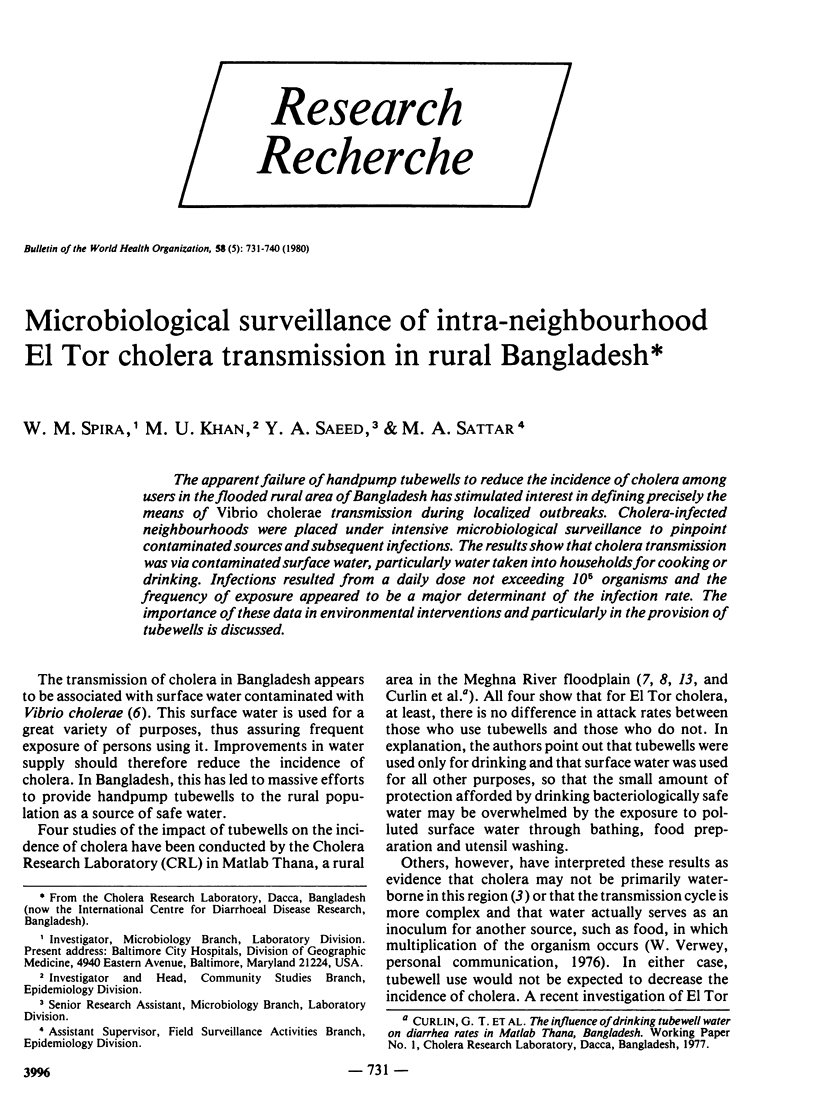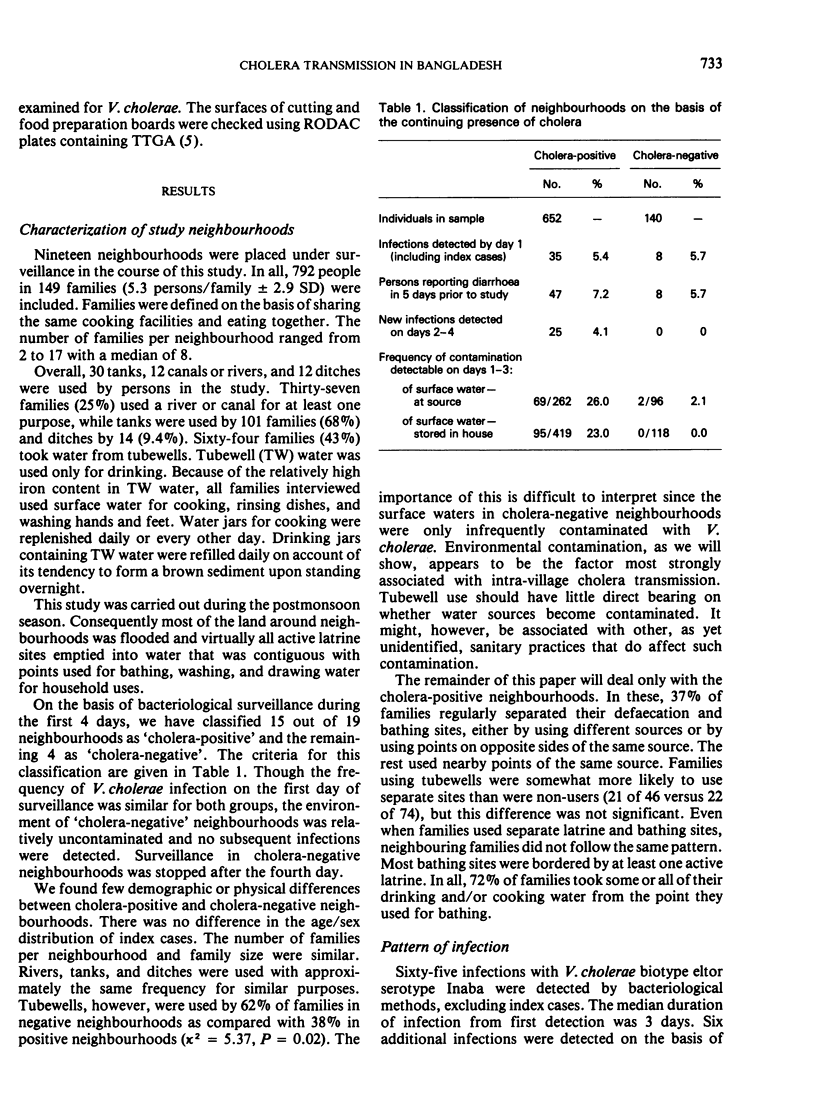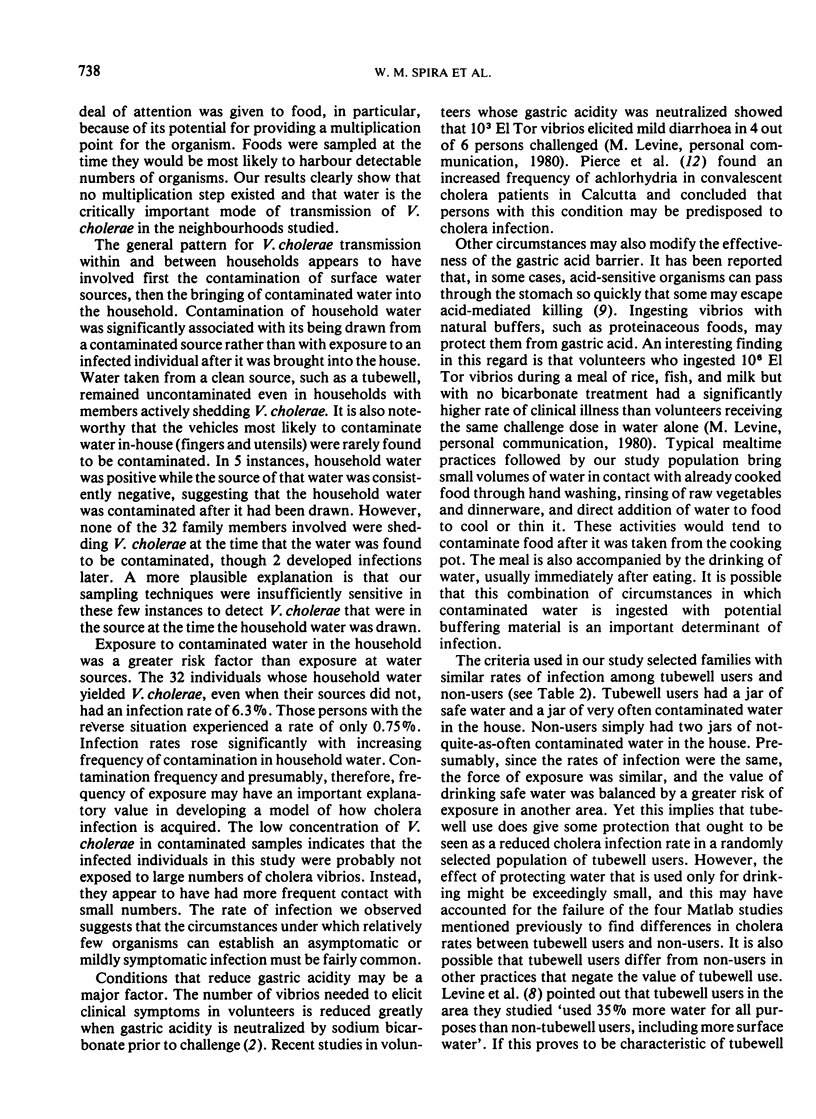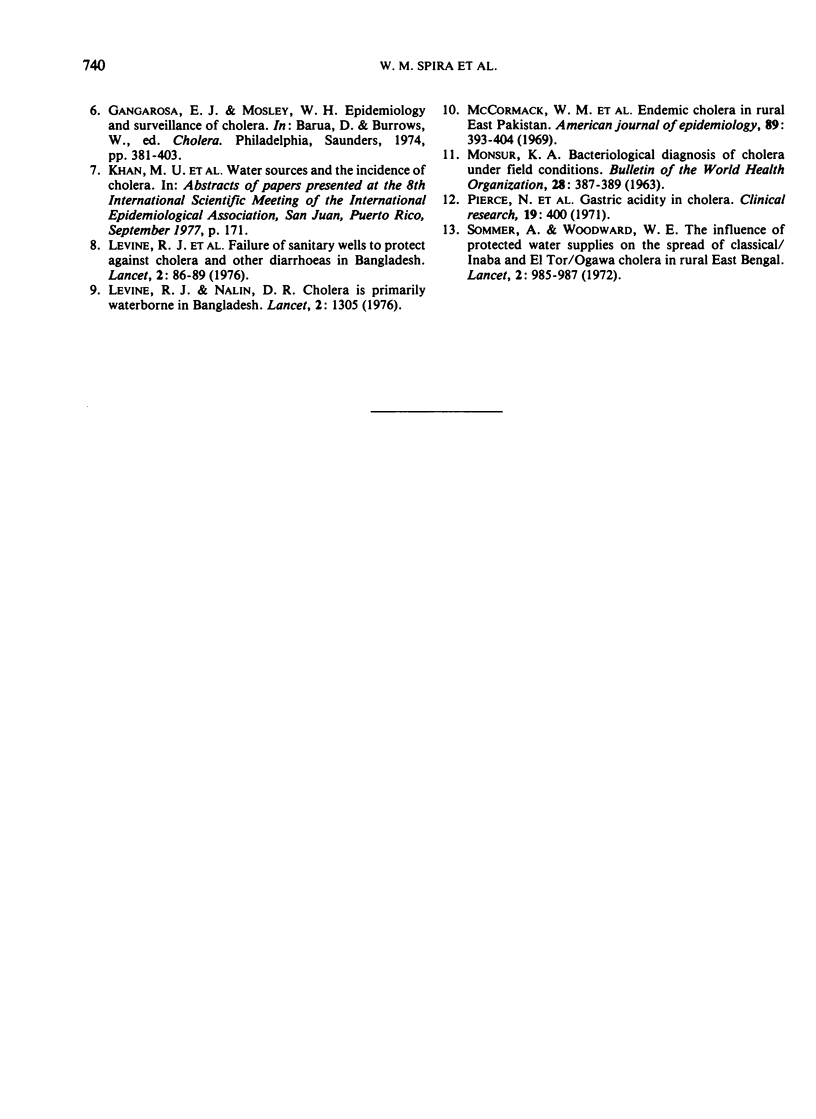Abstract
The apparent failure of handpump tubewells to reduce the incidence of cholera among users in the flooded rural area of Bangladesh has stimulated interest in defining precisely the means of Vibrio cholerae transmission during localized outbreaks. Cholera-infected neighbourhoods were placed under intensive microbiological surveillance to pinpoint contaminated sources and subsequent infections. The results show that cholera transmission was via contaminated surface water, particularly water taken into households for cooking or drinking. Infections resulted from a daily dose not exceeding 105 organisms and the frequency of exposure appeared to be a major determinant of the infection rate. The importance of these data in environmental interventions and particularly in the provision of tubewells is discussed.
Full text
PDF









Selected References
These references are in PubMed. This may not be the complete list of references from this article.
- Benenson A. S., Saad A., Mosley W. H. Serological studies in cholera. 2. The vibriocidal antibody response of cholera patients determined by a microtechnique. Bull World Health Organ. 1968;38(2):277–285. [PMC free article] [PubMed] [Google Scholar]
- Cash R. A., Music S. I., Libonati J. P., Snyder M. J., Wenzel R. P., Hornick R. B. Response of man to infection with Vibrio cholerae. I. Clinical, serologic, and bacteriologic responses to a known inoculum. J Infect Dis. 1974 Jan;129(1):45–52. doi: 10.1093/infdis/129.1.45. [DOI] [PubMed] [Google Scholar]
- Feachem R. Is cholera primarily water-borne. Lancet. 1976 Oct 30;2(7992):957–958. doi: 10.1016/s0140-6736(76)90914-4. [DOI] [PubMed] [Google Scholar]
- Levine R. J., Khan M. R., D'Souza S., Nalin D. R. Failure of sanitary wells to protect against cholera and other diarrhoeas in Bangladesh. Lancet. 1976 Jul 10;2(7976):86–89. doi: 10.1016/s0140-6736(76)92299-6. [DOI] [PubMed] [Google Scholar]
- Levine R. J., Nalin D. R. Cholera is primarily waterborne in Bangladesh. Lancet. 1976 Dec 11;2(7998):1305–1305. doi: 10.1016/s0140-6736(76)92072-9. [DOI] [PubMed] [Google Scholar]
- McCormack W. M., Mosley W. H., Fahimuddin M., Benenson A. S. Endemic cholera in rural East Pakistan. Am J Epidemiol. 1969 Apr;89(4):393–404. doi: 10.1093/oxfordjournals.aje.a120953. [DOI] [PubMed] [Google Scholar]
- Saunders R. M. The contribution of spatial and border interactions to the "Westheimer effect". Vision Res. 1974 Jun;14(6):379–381. doi: 10.1016/0042-6989(74)90236-3. [DOI] [PubMed] [Google Scholar]
- Sommer A., Woodward W. E. The influence of protected water supplies on the spread of classical-Inaba and El Tor-Ogawa cholera in rural East Bengal. Lancet. 1972 Nov 11;2(7785):985–987. doi: 10.1016/s0140-6736(72)92401-4. [DOI] [PubMed] [Google Scholar]


